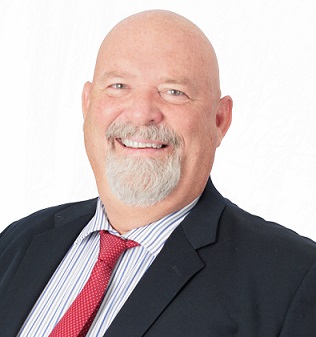 A Ferrari That Runs on Coal
A Ferrari That Runs on Coal
By Denny Flint, Sr. Consultant and Director of Business Development for Assistive Coding, LLC
Being “all ICD-10 all the time for the last 3 years,” I have to admit something. In recent talks it’s been a lot of fun asking people if they are as sick as I am of hearing about ICD-10. Invariably, the “yes” response is unanimous. It’s also fun to tell people to stop focusing on ICD-10 for ICD-10’s sake and rather, for what it means to the future of physician compensation. Last month I wrote an article talking about how ICD-10 is just a vehicle that makes it easier to capture better acuity data necessary to navigate the swift waters that are moving toward diagnosis based reimbursement. Before we go further, for those of you who diagnosis-based reimbursement models don’t apply to you, remember that the proliferation of “shared risk” insurance models includes Medicare Advantage, many state’s adoption of Patient Centered Medical Home for Medicaid, and the fact that the Affordable Care Act mandates that commercial carriers adopt principles of shared risk. It does apply to you and that should give you a reason to read on.
After a recent workshop in Colorado Springs, the moderator asked the audience how many were familiar with shared risk concepts and only 3 hands were raised out of over 60 people in attendance. One of the attendees who raised their hand represented a large multi-specialty group who felt these concepts were so important they employed a dedicated HCC coder in order to ensure optimal acuity level reporting. They understand that today’s data drives tomorrow’s reimbursement. Several people came up and said they couldn’t believe this was the first time they had heard the information and were shocked at their own lack of awareness considering its critical importance given the rapid move to “value based” and “evidenced based” models.
When faced with the prospect, what’s your biggest challenge? By far the most difficult obstacle to overcome is convincing the doctors to change a long-held mindset that says, “The more services and procedures I provide, the more I am reimbursed.” In the new models, less is more. That concept is foreign to most providers. With an anticipated 30% of all insured lives forecast to be covered by these types of plans by 2015, isn’t it time we give this shift the attention it deserves?
The changes that need to be embraced in order to prevail are not sweeping or game changing. Here is an example of a small change that creates significant beneficial impact.
Lucentis was the #1 drug in the Medicare formulary in 2012. $956 million was paid by Medicare at $2000 per injection. Avastin is a $50 treatment clinically proven in a 2 year study to be equally effective as Lucentis. Had physicians writing those prescriptions been motivated to determine Avastin was as effective and utilized it instead, those cost reductions would be shared with plan physicians and costs would be significantly reduced. This is a benefit to all except Roche and Genentech who owned both injectables but only promoted Lucentis for Macular Edema. If you are participating in an ACO, these kinds of changes need to be embraced by the ACO provider team in order for the ACO to thrive.
Here are more examples. An ACO in Illinois makes it a point to contact their Chronic Obstructive Pulmonary Disease patients on poor air quality days asking them to stay indoors. The Emergency Room visits by these patients noticeably declined. A pediatric group participating in an ACO asked that 16 patients who had been hospitalized for Diabetic Ketoacidosis enroll in a program that had 3 elements: patient education, 24/7 phone access to a care giver, and an assessment of the efficacy of the patient outreach. 10 out of 16 patients participated in the program. Over the next 15 months, only one out of the ten had been readmitted. Of the 6 patients who did not participate, 5 were readmitted. The cost savings per patient was $1350. Again, small steps that contribute to a successful campaign.
So where does ICD-10 fit into all this? Consider Hierarchical Condition Categories and the related Risk Adjustment Factors. Medicare needs to know the overall acuity level of the Medicare patient base and the Risk Adjustment Factor is a determining factor in determining the amount of dollars allocated to the program. If every provider would capture ALL chronic diseases once a year according to the M.E.A.T requirements, a more valid picture of just how sick the population is would be created. Those providers routinely reporting incomplete data and unspecific codes are bringing the rest of the dynamic down.
Although this article focuses on the financial aspect of reporting accurate acuity levels, let’s not forget the clinical benefits of creating data that leads to better care. If we don’t change our ways and start to do everything we can to capture data that leads to more effective treatment protocol, in 200 years we will be looked upon much as we regarded caregivers who relied upon flawed data and thereby espoused bloodletting and leeches 200 years ago.
We have 21st century technology fed by archaic data sets. It’s like having a Ferrari that runs on coal. It’s time to embrace the tenet that says, “Capture every bit of data that leads to better care.” Is that so revolutionary a thought?
About the Author: Denny Flint is Sr. Consultant and Director of Business Development for Assistive Coding, LLC, a member of The Pinnacle Group family of physician financial, education, strategic planning, and coding suite of services. He has presented over 375 ICD-10 workshops in the past three years and is part of the ICD-10 CO and LA Training Coalitions. He sits on the editorial board of ICD-10 Monitor and has been a frequent guest on Talk Ten Tuesday.
He can be reached at dflint@assistivecodingservices.com.
